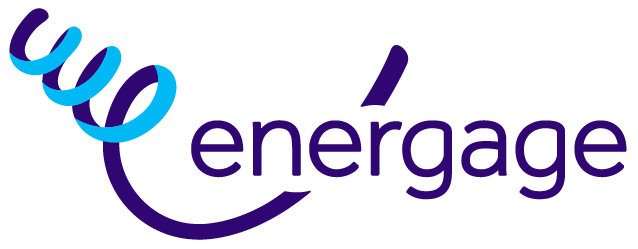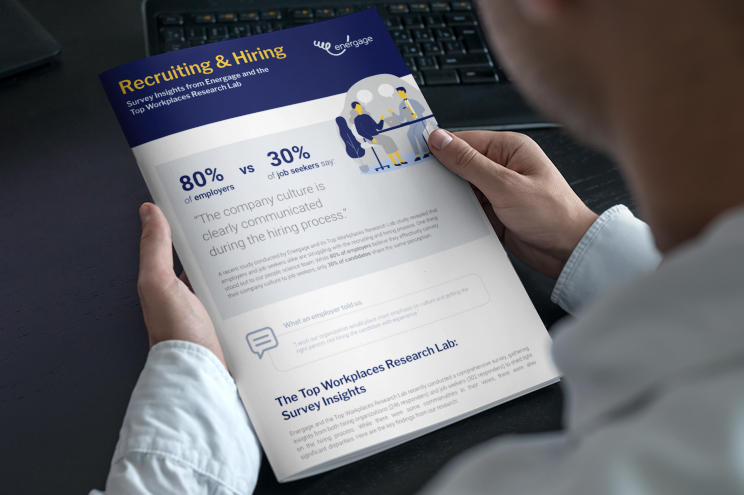Employee feedback helps companies grow by pinpointing company culture, operations, and productivity bottlenecks. To receive valuable feedback, leaders must create a safe space that encourages organizational growth and honesty. Without a proper feedback structure, employees might feel obligated to remain positive, which negatively impacts company culture, performance, and retention of top talent.
We know how much company culture impacts employee honesty and how leadership roles impact organizational culture. To grow your business, leadership must nurture a culture of honest feedback. Employee honesty might be intimidating to some, but it’s not as scary as the cycle of inefficiency that comes from unproductive feedback.
What is employee feedback?
Employee feedback is the basis of our work at Top Workplaces. It is a company’s most valuable resource and one of the most essential drivers of employee engagement. Time and time again, we’ve seen employee feedback help companies navigate and grow from difficult situations. Whether the feedback is positive or negative, it’s constructive.
Employees will always have something to say, so providing them with a healthy, open space to share is essential. Feedback can include anything from casual comments between employees to structured surveys. Without structure, employees might share their opinions in unproductive ways.
Why is collecting feedback from employees important?
Successful companies treat employees like customers, valuing their feedback evenly. That’s because employee feedback helps companies:
- Identify operational bottlenecks
- Improve company culture
- Improve customer experience
- Improve employee engagement
- Improve employee recruitment and retention
- Improve interdepartmental communication
- Prevent employee burnout
- Uncover previously hidden problems
10 Ways to get feedback from employees
Curious how to collect feedback from employees? Here, we explore the ten best ways to get honest feedback. Feel free to play around with different approaches until you find a combination that works well for your employees. The more options you provide, the more valuable feedback you’ll receive.
1. Employee surveys
Anonymous surveys are one of the best ways to get feedback from employees. And lucky for you, there are many different employee survey options. Are you looking for regular, quick temperature checks? Pulse surveys are great for that. Do you need a more comprehensive report on employee satisfaction, engagement, and retention? Anonymous, annual employee engagement surveys are the perfect tool.
Learn more: How to Interpret and Analyze Employee Engagement Surveys
2. Team meetings
Whether virtual or in person, team meetings are a great way to include employees who feel more comfortable giving feedback in group settings. Some people are more inclined to speak up in a team setting, but only if they feel supported by their coworkers and team leaders. Creating a safe environment encourages employee honesty and helps teams overcome difficulties together.
3. One-on-one meetings
Building robust and open communication channels is a great way to improve company culture and performance. While some people prefer sharing feedback in group settings, others prefer communicating one-on-one. One-on-one meetings can be between an employee and the manager they report to or between an employee and an indirect manager.
They can also be between a manager and a senior leader. To receive the most valuable feedback, ensure all employees know the company values honesty over positivity. When employees and managers feel comfortable opening up, their feedback becomes much more meaningful.
4. Talk to managers
Talking with managers is one of the most innovative ways to get employee feedback. The bridge between employees and higher-ups, managers must be able to share insights about their team’s engagement, productivity, and satisfaction. They are on the frontline daily, which means they can provide incredible insights into the company culture that might otherwise get overlooked. Although leaders can improve employee engagement, they need managers’ data to get the job done.
5. Online reviews
In today’s world, it is common for employees (past and present) to leave employer reviews online. These reviews can range from positive feedback to information employees feel uncomfortable sharing in person. Whether the feedback is negative or positive, your company must use it constructively. If there are multiple comments about the same problem, then it’s time to do something about it. Otherwise, negativity online will hurt your brand reputation and employee recruitment.
6. Performance reviews
Employee performance reviews are one of the most straightforward methods of collecting feedback in the workplace. Usually done at the end of the year, performance reviews allow employers to give and receive feedback from employees and managers. These check-ins are a great time to compare productivity with employee feedback. Getting more information about the employee experience helps leaders understand what’s standing in the way of higher performance and what they can do to help. The roadblocks can be fixed easily by leadership.
7. New employee questionnaires
New employee questionnaires are one of the best feedback methods in the workplace. When starting out, employees have higher levels of enthusiasm and optimism. That means the first few days of their job are the perfect opportunity to ask them about motivation styles and personal development goals. Understanding each employee’s individual preferences and values will help your company continue supporting people more meaningfully.
Looking back at someone’s new hire questionnaire helps managers learn more about their employees and see the bigger picture of team dynamics. Plus, it’s a great way to uncover gaps in the new employee experience and onboarding process, ensuring future new hires have the best experience possible. Remember – the first few days of a new job set the tone for future success and retention.
8. Employee suggestion box
Another great item on the list of how to collect feedback from employees? Company suggestion boxes allow employees to provide anonymous and honest feedback. Suggestion boxes must be somewhere where employees feel comfortable participating, and it’s a good idea for leaders to encourage people to participate. Even minor suggestions will help your office perform more efficiently and improve company culture.
9. Stay interviews
Stay interviews at your company reduce the number of interviews your employees have at other companies. They also help mitigate quiet quitting, which is growing more and more popular. A stay interview aims to learn what your employees like most about their current job and what entices them about other job opportunities. Employees might feel intimidated by these questions, so managers must create a safe space for honest, open feedback.
Managers and leadership might learn that their organization needs more training and development opportunities, different kinds of support, or improved employee appreciation. Whatever the feedback is, use it to improve the employee experience and prevent employee breakups.
10. Exit interviews
Many companies let employees leave without an exit interview, allowing a valuable resource to walk out the door. Chances are other employees are struggling with similar issues that pushed that employee to find a new job. If your company doesn’t investigate more, more people will leave for the same reason: increasing turnover rates and low morale.
Exit interviews and the feedback they provide are crucial for employee retention strategies. Without them, your company will likely see more negative comments on review sites. Even worse? Those unhappy employees might spread negative comments via word of mouth, which affects the brand’s reputation.
How to put employee feedback into action
Successful businesses create an action plan with employee feedback. There are many ways to use feedback and employee survey insights to make organizational changes. Be sure to act with honesty and urgency when you:
- Create solutions
- Host company-wide conversations
- Share results with employees
- Show employees the benefits of honest feedback
- View all feedback constructively
Get better feedback with Energage
Energage takes the stress out of creating and implementing employee engagement surveys. Our setup process is easy to understand, and the results are undeniable — for leaders and employees.
Not only can you benchmark and measure employee engagement with Energage, but you also get more honest, valuable feedback when employees realize they survey process is 100% confidential. Get started today to improve employee engagement and satisfaction across the board.


